Введение: Почему коммерческое оборудование для приготовления сыра имеет значение
В современной индустрии пищевых продуктов, Коммерческое оборудование для производства сыра играет ключевую роль в расширении молочных операций. Производите ли вы чеддер, Моцарелла, Гауда, или фета, имея надежный, эффективный, и гигиеническое оборудование имеет решающее значение для удовлетворения потребностей рынка и поддержания согласованности продукта.
Это всеобъемлющее руководство исследует различные виды машин изготовления сыра, используемых в коммерческом производстве, их технические характеристики, Интеграция производственной линии, и как выбрать правильное решение для вашего молочного бизнеса.
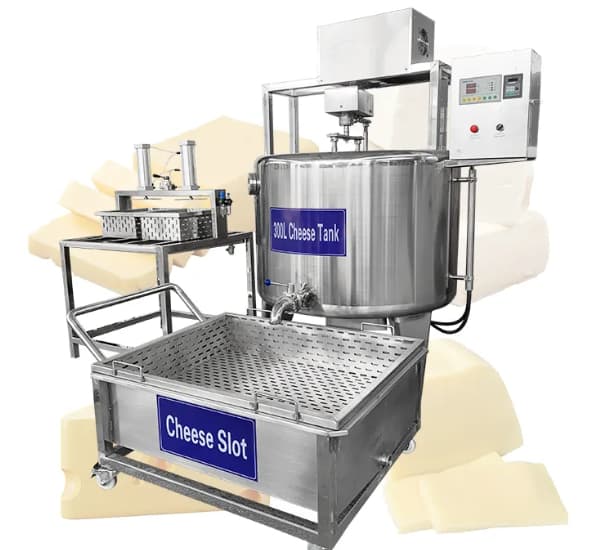
1. Типы коммерческого оборудования для приготовления сыра
1.1 Машины для обработки промышленного сыра
Машины для обработки промышленного сыра предназначены для производства сыра с высокой точки зрения на молочных заводах. К ним относятся:
- Системы пастеризации молока
- Сырные чаны для коагуляции
- Творог режущих машин
- Оборудование для разлуки сыворотки
- Формовочные и прессовые машины
- Брининг танки
- Упаковочное оборудование
Эти машины обычно строится из 304 или 316 нержавеющая сталь Для обеспечения гигиены и безопасности пищевых продуктов.
1.2 Автоматические системы изготовления сыра
Автоматическое оборудование для изготовления сыра имеет программируемые логические контроллеры (ПЛК) что автоматизирование смешивания, обогрев, и процессы резки. Ключевые преимущества включают:
- Снижение ручного труда
- Увеличение скорости производства
- Лучшая последовательность и контроль партии
- Повышенная эффективность очистки (через системы CIP)
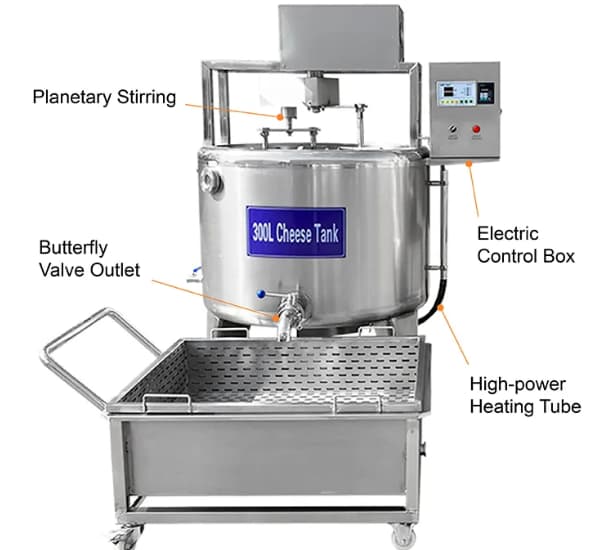
1.3 Модульное оборудование для изготовления сыра для небольших и средних молочных заводов
Модульные системы позволяют молочным завокам запускаться с малого и расширять позже. Этот подход идеально подходит для:
- Масштабисты ремесленников
- Производители молочных продуктов среднего размера, стремящиеся увеличить результат
- Экспорт-ориентированные производственные предприятия сыра
2. Обзор линии производства сыра
Современная сырная фабрика работает как оптимизированная производственная линия. Вот разбивка каждого этапа:
2.1 Прием и хранение молока
- Сырое молоко принимается в изолированные резервуары для хранения.
- Испытания проводятся на температуру, содержание жира, и микробное присутствие.
Оборудование используется:
- Резервуары для хранения молока из нержавеющей стали (500–10 000 литров)
- Системы очистки CIP
- Переносить насосы
2.2 Пастеризация молока
Молоко нагревается до определенных температур, чтобы убить патогенные микроорганизмы и деактивировать ферменты.
Ключевые характеристики:
- Емкость: 500–15 000 л/час
- Температурная диапазон: 65° C - 95 ° C.
- Источник тепла: Электрический, газ, или пар
- Автоматизация: Полностью автоматически с контроллерами PID/PLC
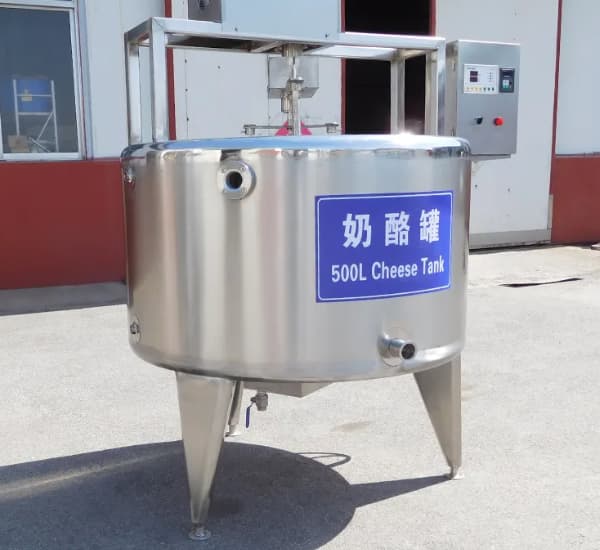
2.3 Коагуляция и образование творога
Культуры Rennet и Starter добавляются в пастеризованное молоко в сырных чанах, чтобы образовать твороги.
Оборудование:
- Двойной или прямоугольные сырные часы
- Нежные агитаторы (10–60 об / мин)
- Нагрев с рубашкой для контроля температуры
Спецификации:
- Объем: 300L до 5000L
- Материал: Айси 304 нержавеющая сталь
- Интегрированный мониторинг рН и температуры
2.4 Разрешение и разделение сыворотки
Сформированный творог разрезан на кубики, и сыворот.
Спецификации творога:
- Клинок материал: Нержавеющая сталь
- Типы лезвий: Вертикальный & горизонтальный
- Драйв мощность: 0.5–3 кВт
- Контроль: Полу или полностью автоматический
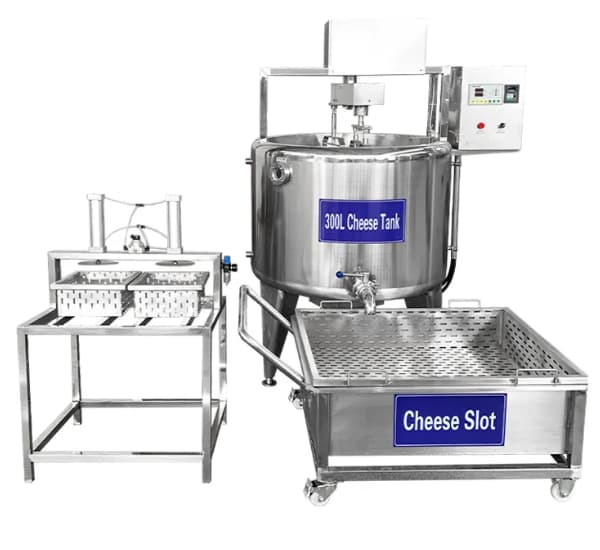
2.5 Обращение с творогом и формование
Пророды переносятся в плесени и прижаты к форме. Нажатие удаляет остаточную сыворотку и формирует конечный продукт.
Формовочное оборудование:
- Размеры плесени: Стандартный или обычай (1–20 форм/блок)
- Насущная сила: 50–200 кг на форму
- Власть: Пневматический или гидравлический
- Доступен интерфейс PLC
2.6 Посол / Брими
Сыр либо соленый, либо погружен в рассол.
Брининг бак функции:
- Емкость: 1000L до 8000L
- Контроль солености: Автоматический датчик на основе
- Агитация: Медленное вращательное весло или пузырьковая система
2.7 Старение или созревание (Если требуется)
Для сыров, таких как Гауда или Пармезан, Стареющие камеры предоставляют контролируемые среды.
Условия старения:
- Температура: 10–15 ° C.
- Влажность: 80–95%
- Стойки: Из нержавеющей стали или пищевого пластика
2.8 Резка и упаковка
Сырные блоки или колеса разрезаны и упакованы для распределения.
Спецификации упаковочного оборудования:
- Тип: Вакуумная печать, Термоформование, сокращающаяся обертка
- Скорость: 20–60 упаковки/минута
- Метка принтера: Интегрированный штрих -код и партийная маркировка
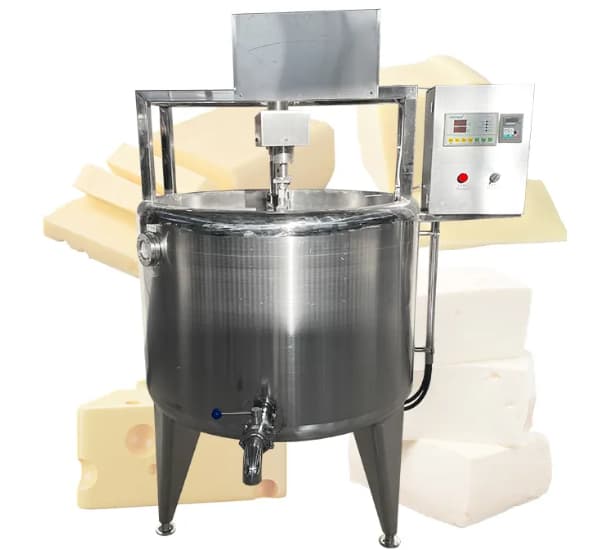
3. Технические характеристики оборудования для приготовления сыра
| Тип оборудования | Емкость | Материал | Уровень автоматизации | Специальные функции |
|---|---|---|---|---|
| Пастерилизатор | 500–15 000 л/час | Айси 304 SS | Полностью автоматически | Управление пидом, CIP -система |
| Сыр | 300–5000 л | Айси 304/316 | Полу/полностью автоматический | Обжаренный, Двойные агитаторы |
| Трудная режущая машина | 0.5–3 кВт двигатель | Нержавеющая сталь | Полу/полностью автоматический | Двойное лезвие, переменная оборота |
| Сырная пресса | До 200 кг плесень | SS Frame | Ручное или пневматическое | ПЛК с памятью рецепта |
| Брининг Танк | До 8000 Л | SS Tank | Дополнительная автоматизация | Соленовый монитор, агитация |
| Упаковочная машина | 20–60 ПК/мин | SS + пластик | Полностью автоматически | Вакуумная печать, маркировка, Карта упаковки |
4. Альтернативы длинного хвоста для коммерческого оборудования для приготовления сыра
4.1 Оборудование для производства сыра для заводов
Промышленное производство сыра оптимизировано для непрерывного производства. Это обеспечивает последовательность, масштабируемость, и нормативно -правовое соответствие. Системы часто включают:
- Непрерывные пастерилизаторы
- Встроенные датчики мониторинга качества
- Автоматизированный CIP (Чистый на месте) станции
4.2 Оборудование для приготовления сыра высокой мощности
Для крупных молочных заводов, Машины с высокой емкостью поддерживают размеры партий до 10 000 л.. Ключевые функции:
- Надежные системы кадров и моторных систем
- Высокоэффективные агитаторы
- Партийная отслеживание и хранение рецептов
4.3 Производство сыра для экспортеров
Производители сыра, ориентированные на экспорт, требуют GMP и ISO-сертифицированных машин для соответствия международным стандартам. Функции, чтобы искать:
- Многоязычный интерфейс PLC
- Системы регистрации данных
- Модульные обновления для нескольких типов сыра
5. Преимущества использования коммерческого производства сыра
5.1 Более высокая эффективность
Автоматизация снижает ручной труд, повышает точность, и понижает время производства.
5.2 Последовательное качество продукта
Цифровые элементы управления обеспечивают точную температуру, давление, и контроль времени, приводя к постоянной текстуре сыра и аромате.
5.3 Лучшая гигиена и соответствие
Все детали в контакте с едой - нержавеющая сталь, спроектирован для легкой очистки и полной отслеживания.
5.4 Энергетическая экономия
Современные системы используют энергоэффективные двигатели, Утилизация теплообменников, и оптимизированные потоки процесса.
5.5 Масштабируемость
От 300L ремесленных настройки до 10 000 л/день коммерческих линий, Системы могут быть настроены для роста с вашими потребностями.
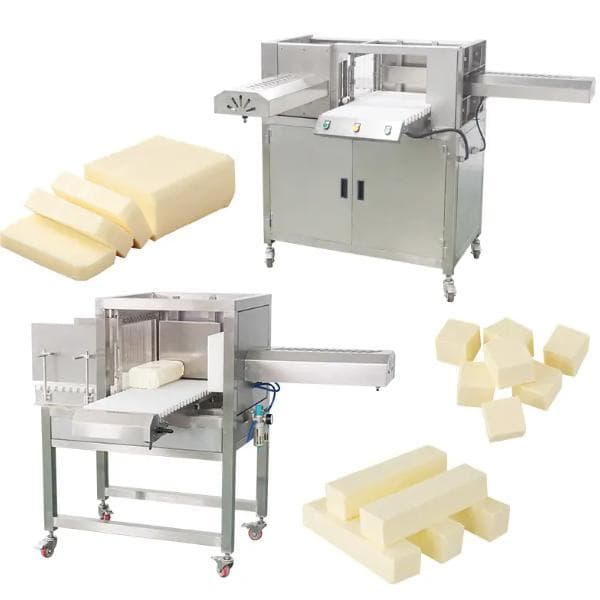
6. Как выбрать правильное коммерческое сырное оборудование
6.1 Определите тип сыра
Различные сыры требуют конкретных процессов. Например:
- Моцарелла: Нужны растягивающие машины и ванны с горячей водой
- Фета: Требуется рассылка танков
- чеддер: Требуются нажатые и стареющие камеры
6.2 Рассчитайте требуемую емкость
Оцените ежедневные потребности в производстве и будущий рост. Выберите оборудование соответственно, чтобы избежать ранней замены.
6.3 Соответствовать уровню автоматизации до уровня квалификации
Если ваши сотрудники хорошо обучены, Полностью автоматические системы уменьшат ошибки. Для низкотехнологичных сред, полуавтоматический может быть лучше.
6.4 Соответствие стандартам
Убедитесь, что машины встречаются с FDA, CE, Iso, и местные требования к безопасности пищевых продуктов.
6.5 Общая стоимость владения (TCO)
Фактор не только за покупной, но и установку, обучение, запчасти, потребление энергии, и обслуживание.
7. Тематическое исследование: 5000L Production Line Production Line
Настройка сырного завода среднего размера включает:
- 1 x 5000l резервуар для хранения молока
- 1 X 5000L Пастерилизатор
- 1 x 5000l сырного часа с автоматическим агитатором
- 1 x Пневматический творог резак
- 1 x 10-миномочная гидравлическая сырная пресса
- 1 x 3000L Брининговый танк
- 1 x стареющая комната (10°С, 85% Раствор)
- 1 x вакуумная упаковка с принтером метки
Ежедневный вывод: ~ 1,5–2 тонны готового сыра
Требуется персонал: 4–5 Операторы
Уровень автоматизации: 80% автоматизированный
Заключение
Коммерческое оборудование для изготовления сыра имеет важное значение для любого молочного бизнеса, стремящегося масштабировать производство, соответствовать стандартам качества, и оставаться конкурентоспособным на сегодняшнем рынке. От образования творога до упаковки, Каждый компонент играет важную роль в обеспечении эффективности и превосходства продуктов.
Инвестируя в высококачественное оборудование, адаптированное к вашему типу сыра, объем производства, и нормативные потребности, Вы будете настраивать свою работу для долгосрочного успеха.
